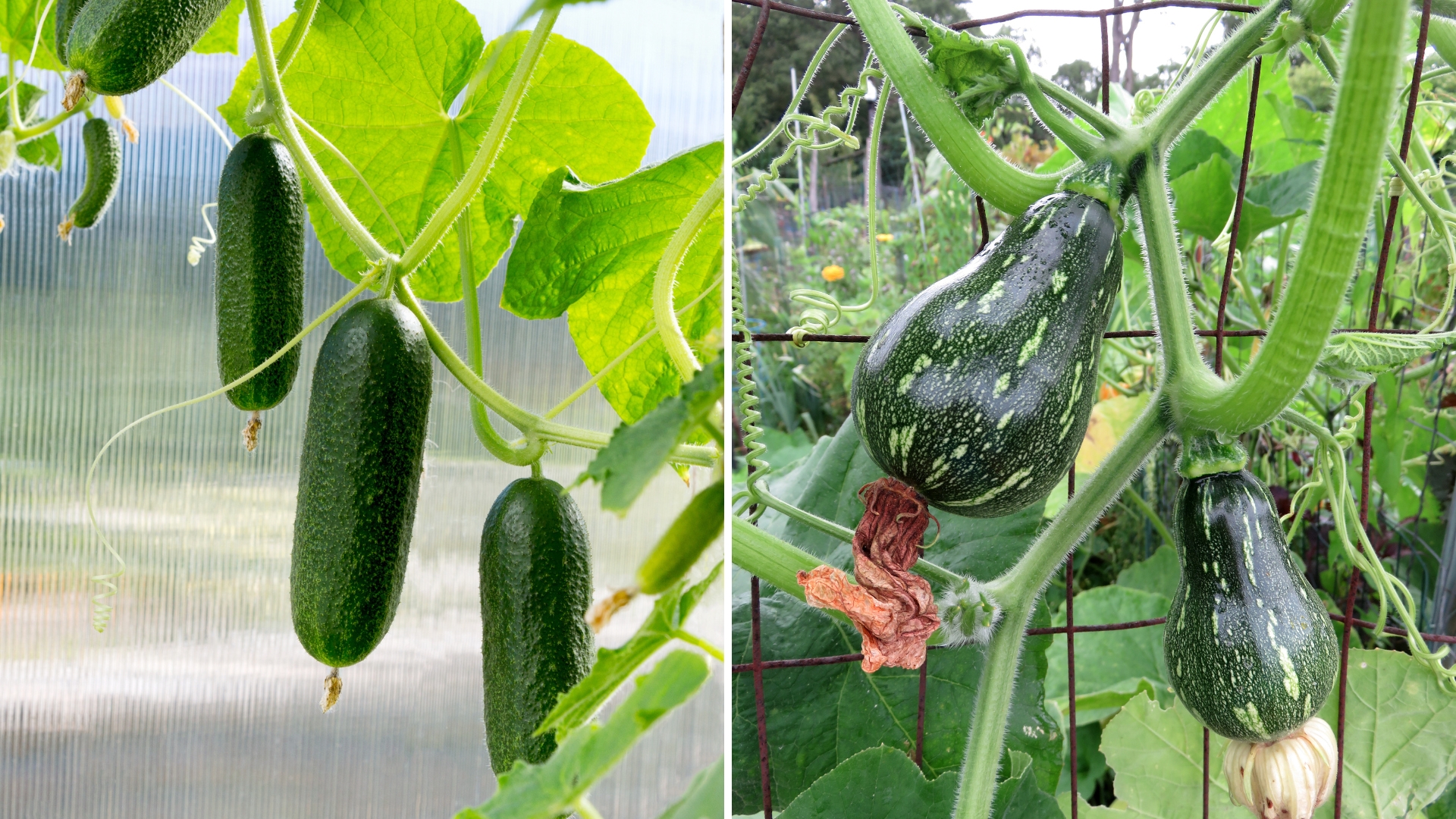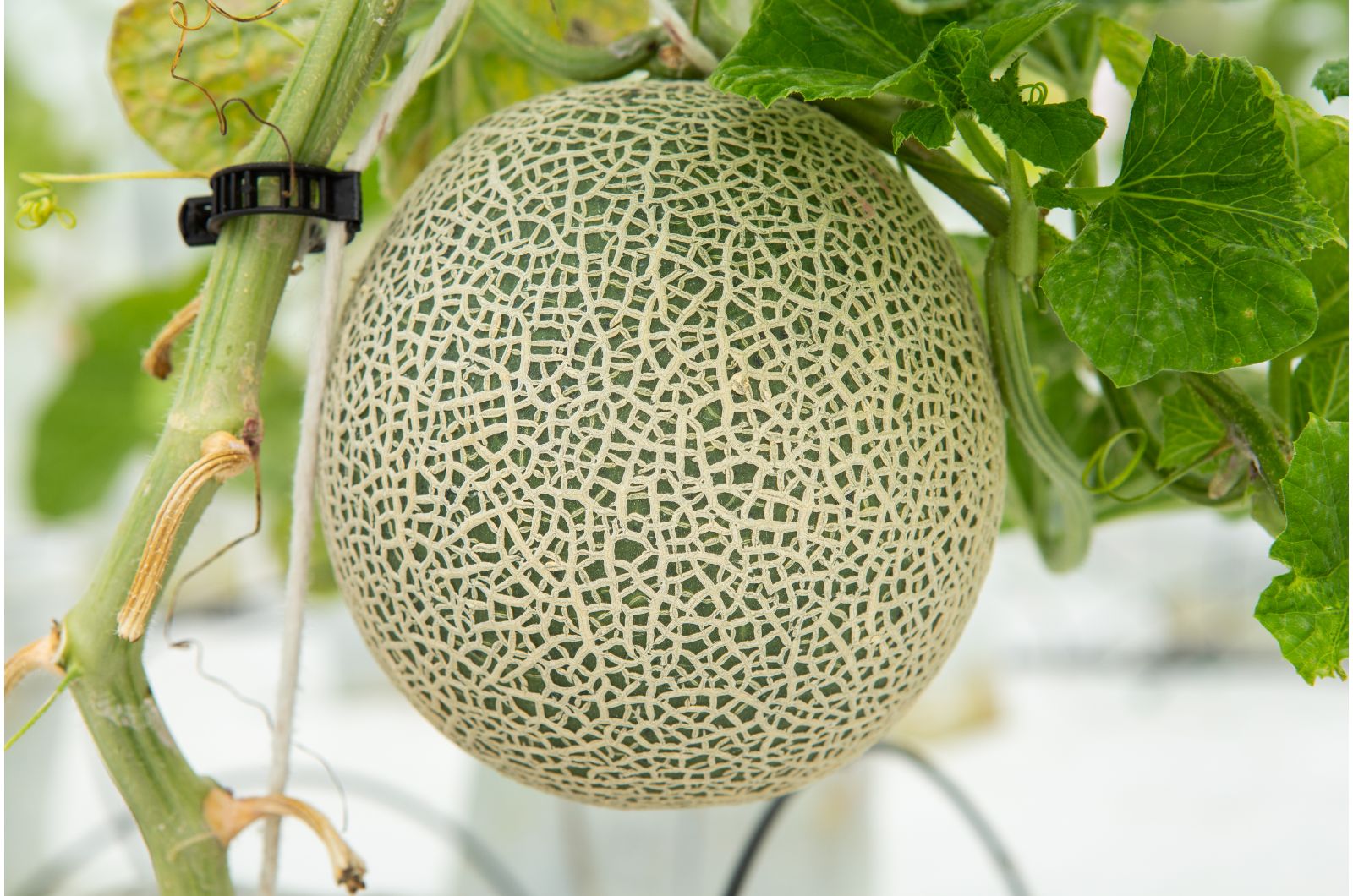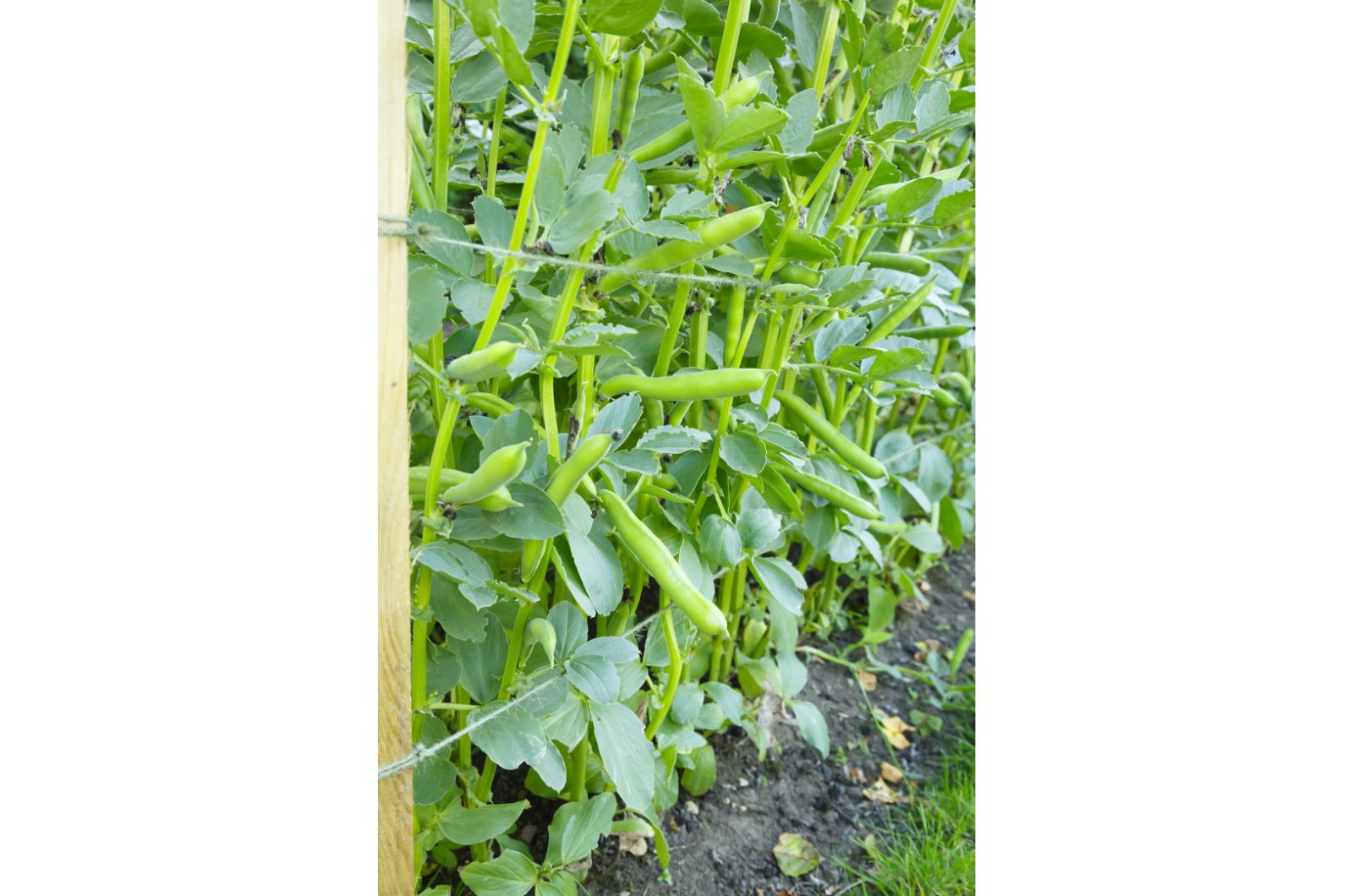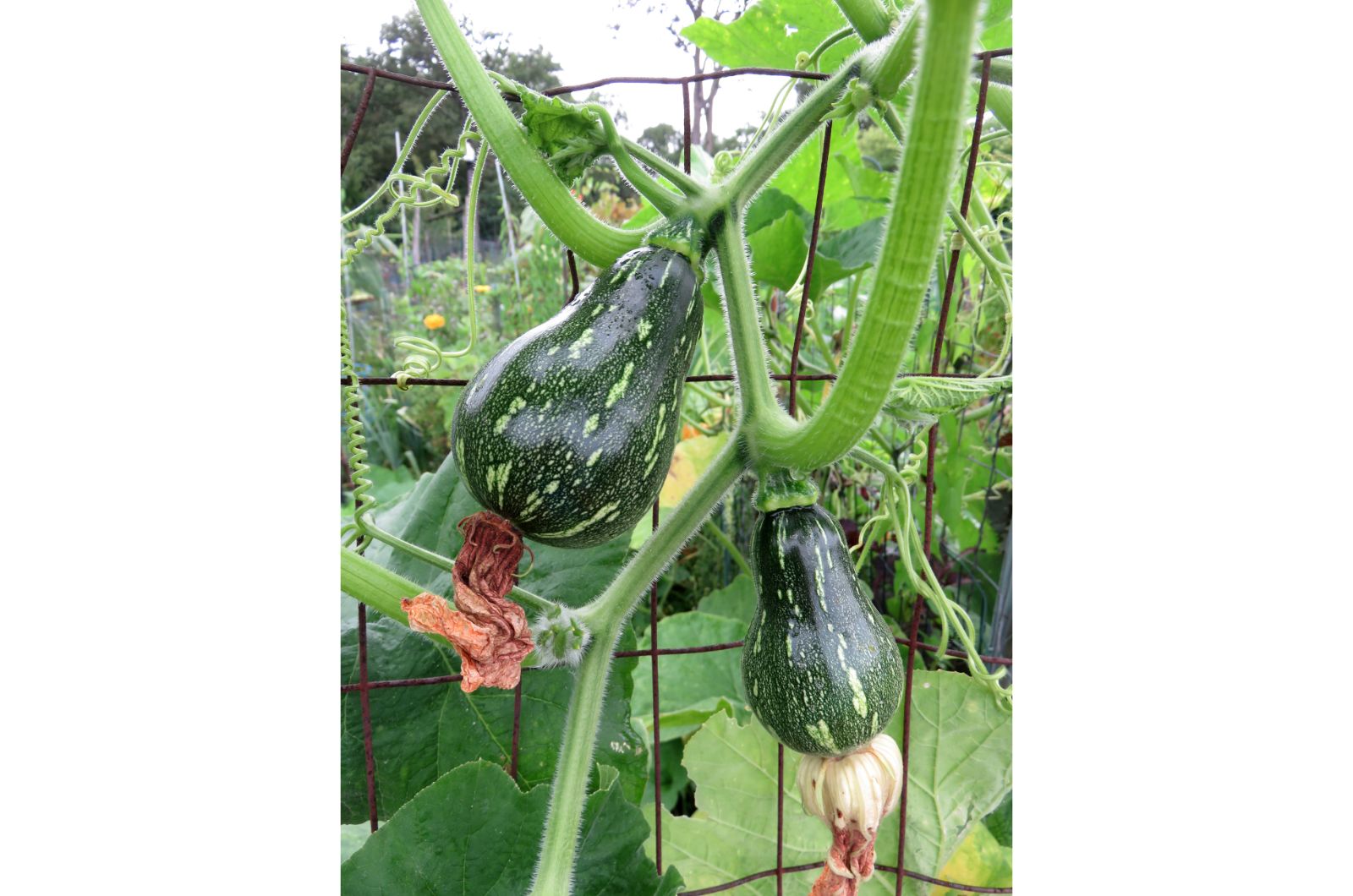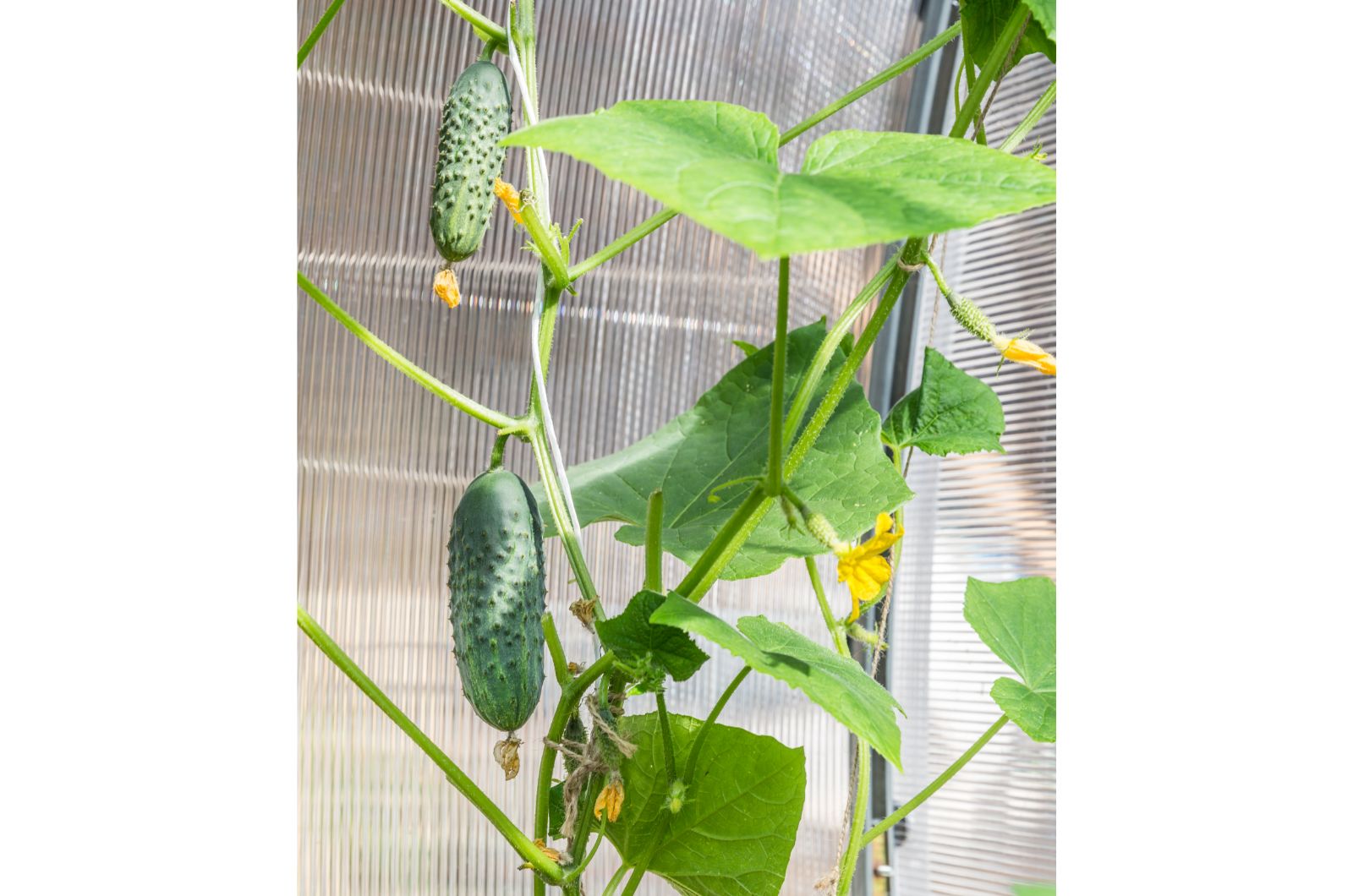Vertical gardening is a super exciting and highly beneficial way of growing plants. The good news is that a lot of plants love the conditions found in these gardens.
This means that the upcoming summer will bring you lots of homegrown, delicious crops.
If you have trouble deciding on the species, I’ll show you the 5 best summer crops for vertical gardening and some tried-and-true tips for growing them!
Let’s get started!
1. Cantaloupe
Cantaloupe is perfect for vertical gardens because it has a climbing growth habit. Once you attach your cantaloupes to supporting structures, it won’t be as susceptible to pests as it would if it were attached to the ground.
Ladder mesh trellises are an excellent choice for cantaloupes because they’re cost-effective and you don’t need any special skills to use them.
Simply take one end of your ladder mesh trellis and put it at the edge of your garden bed. Push it into the soil and then repeat the same procedure with the other end.
When growing cantaloupes this way, make sure you use one plant per trellis, and don’t forget to weave twines along the trellis.
If there are too many suckers, you should remove them so that the number of cantaloupes per plant doesn’t exceed 3.
The best varieties for ladder mesh trellises are Hearts of Gold and Hales Best.
2. Beans
Another summer crop you can add to your vertical garden is beans. You should know that pole beans that are grown with this technique need more time to produce.
It’s definitely worth it because once they start generating crops, they won’t stop all season long.
I often refer to pole beans as smart cookies since they climb easily along the trellis once they find it.
You’ll enjoy harvesting your beans because they’ll hang upside down from the trellis. If you want to encourage plants to generate more beans, I strongly recommend regular harvesting.
Kentucky Wonder pole beans are a perfect variety for vertical gardening.
3. Summer Squash
Summer squash and climbing zucchini are specifically bred for vertical gardening, so you can’t make mistakes no matter which one you choose.
They’ll highly benefit from the air circulation ensured by trellises. As you may know, pests and diseases are common in squashes and zucchinis that are located on the ground.
Another benefit is that flowers of squash and zucchini are more noticeable when grown on a trellis, which means more bees!
You’ll most likely need to tuck the vines in among the selected trellis as the plants develop further. Lower leaves will probably suffer some damage but you can remove them as soon as you notice any changes.
4. Cucumbers
Another crop that can adorn your vertical garden this summer is cucumbers. You can go with Japanese cucumbers or some Armenian cucumber varieties, such as Painted Serpent.
Armenian cucumbers are an excellent choice for those who live in warm and dry climates. Vertical gardening allows you to get more cucumber plants by using less space.
Attaching cucumbers to a trellis is essential because these plants can easily take over an entire garden bed. One of the methods I use is planting one cucumber per square foot of the trellis.
A common mistake when growing cukes on trellises is not attaching the vines manually. You should also remove any unnecessary suckers to improve air circulation.
5. Tomatoes
And the last summer crop on our list is the tomato. If you grow determinate varieties, you can use tomato cages as a structural support.
On the other hand, if you have indeterminate varieties, you’ll need to ensure sturdy structural support. For instance, you can use arched trellises for tomatoes with a large mature size.
Inspect your tomatoes regularly and make sure you remove the suckers, paying attention not to break older branches.
Big Beef Tomato, Cherokee Purple, and San Marzano are just a few of the varieties that can grow well in vertical gardens.

